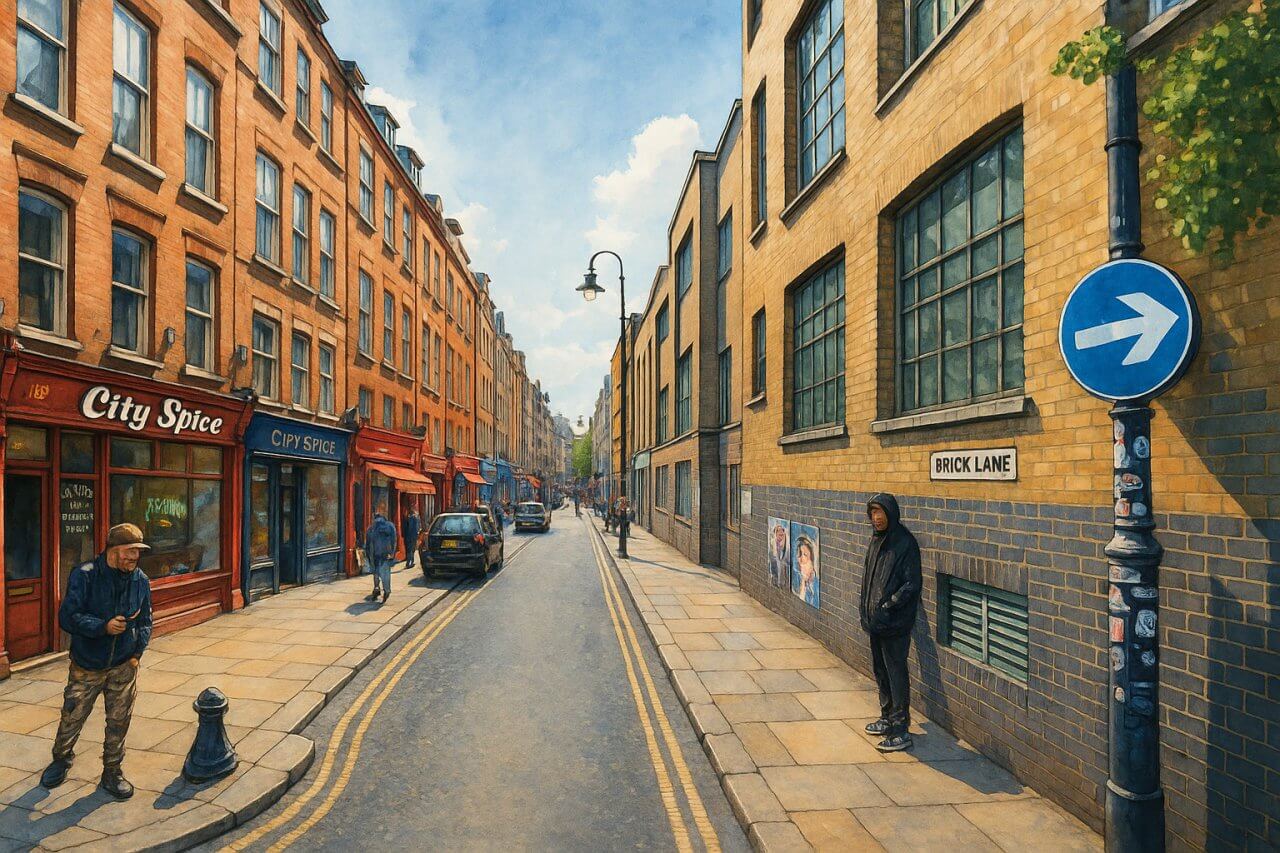
Brick Lane, London
Brick Lane is one of East London's most famous and culturally rich streets, located in the London Borough of Tower Hamlets. Stretching through the heart of Spitalfields and Bethnal Green, Brick Lane is best known for its vibrant Bangladeshi community, world-class curry houses, bustling markets, and ever-evolving street art. It's a compelling destination for tourists, photographers, and Londoners alike.
Brick Lane lies approximately 2.6 miles (4.2 km) by road from Charing Cross, the traditional centre of London. It can be easily reached by road, bike, or public transport from Central London.
History of Brick Lane
Brick Lane’s origins date back to the 15th century, when it was known for brick and tile manufacturing, owing to the local clay deposits – hence the name Brick Lane. Over the centuries, it developed into a key route for brewers, traders, and immigrants settling in East London.
In the 17th century, the area became home to French Huguenot refugees fleeing religious persecution. In the 19th century, Irish and Jewish communities followed. Today, Brick Lane is widely recognised as the heart of London’s Bangladeshi-Sylheti community, with the street often referred to as "Banglatown."
The Name
The name Brick Lane comes directly from its early history in brick and tile manufacture. The brick kilns once operating here gave the street its now-iconic name.
Location and Nearest Tube Station
Brick Lane begins near Whitechapel Road and extends northwards to Bethnal Green Road. It's well served by public transport. The nearest London Underground station is Aldgate East, served by the District and Hammersmith & City lines. Shoreditch High Street Overground station is also just a short walk away for visitors arriving via East London’s rail network.
What to See and Do on Brick Lane
Brick Lane is a treasure trove of food, fashion, art, and history. Highlights include:
- Brick Lane Market – Open on Sundays, it features everything from vintage clothes to handmade crafts and global street food.
- Truman Brewery – A repurposed industrial site that now houses indie shops, art exhibitions, and pop-up events.
- Street Art – The lane is an outdoor gallery of works by renowned artists like Banksy, Stik, and ROA.
- Curry Houses – The lane is lined with Bangladeshi restaurants, some family-run for generations. Be sure to try chicken tikka masala or beef bhuna.
- Beigel Bake – A beloved 24-hour bakery serving traditional Jewish-style bagels, especially the famous salt beef beigel.
Fun Facts
Brick Lane was once home to the Jack the Ripper terror zone in Victorian times, and many walking tours incorporate this historical angle.
The area is featured in numerous films and books, including the critically acclaimed novel “Brick Lane” by Monica Ali, which tells the story of a Bangladeshi woman’s life in London’s East End.
During the early 2000s, Brick Lane saw a surge of gentrification, transforming parts of the street into trendy hubs while preserving much of its traditional charm and immigrant roots.
Quick Facts
- Location: Spitalfields and Bethnal Green, London Borough of Tower Hamlets
- Distance from Charing Cross: Approximately 2.6 miles (4.2 km) by road
- Origin of Name: Named after 15th-century brick and tile manufacturing in the area
- Pronunciation Note: “Leadenhall” = LED-en-hall (/ˈlɛd.ən.hɔːl/)
- Nearest Underground Station: Aldgate East (District, Hammersmith & City lines)
- Notable Attractions: Brick Lane Market, Truman Brewery, Beigel Bake, Street Art
- Fun Fact: Often referred to as “Banglatown” due to its large Bangladeshi community
References
- Tower Hamlets Council – Brick Lane Cultural Quarter
- BBC London – The Story of Brick Lane
- Visit London – Brick Lane
Map of Brick Lane, London

Painting of Brick Lane, London (View image in full size)